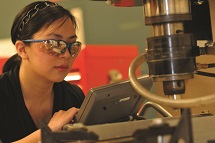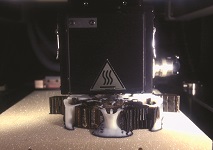
You can hardly escape all the media attention about manufacturing and its impact on the economy and jobs, but while there may be some debate as to the extent of manufacturing’s return to prominence in the U.S. economy, there is no doubt about its importance.
A strong and enduring manufacturing sector has long been at the center of America’ economic prosperity, consistently delivering returns on investment, helping our balance of trade, creating high-paying jobs and ensuring the U.S. global leadership position in defense-based technologies.
According to recent figures from the U.S. Treasury Department, manufacturing has accounted for 26 percent of growth since the recession in 2009 and has added close to a half million jobs since 2010. In that time, real manufacturing output has grown 16 percent and productivity has increased 15 percent.
As we take a look at the near-term prospects for the manufacturing sector, we can see things have cooled down a bit from their feverish pace in 2011 and 2012, but still appear to have positive momentum as evidenced by these recent metrics:
-
The Purchasing Managers’ Index has re-emerged over 50 and is currently at 55. (A PMI of more than 50 represents expansion of the manufacturing sector.) The fact that the PMI has dipped below 50 only twice in the past nine months is a positive sign but suggests a cautious outlook beyond the next 90 days.
-
The monthly orders placed with durable goods producers in the U.S. during June was just over $244 billion and represented a new record value, which suggests this may be a new peak or one is about to occur.
-
Finally, expansion in the capacity utilization rate for durable manufacturing, which has always been a significant driver of continued growth, seems to have paused at 77 percent.
To pick up the pace and build a more solid foundation for growth, from our perspective at AMT – The Association For Manufacturing Technology, we must focus on three key drivers that affect the health of U.S. manufacturing and make sure we are doing everything in our power to advance these issues:
-
Global competiveness
-
Innovation and technology
-
Building a qualified workforce… or more aptly a “Smartforce”!

One thing President Obama and Congress agree on is the important role manufacturing plays in economic prosperity and job creation. Unfortunately, what they can’t agree on is what strategies should be employed to assure growth of this key sector of the economy. The President and Senate Democrats want more invested in R&D and education, while the House Republican Leadership wants lower taxes and a more reasonable regulatory environment.
The President has put manufacturing, particularly advanced manufacturing, high on the agenda for improving the economy and creating jobs. Several programs have been launched focused on advanced manufacturing technologies and Science, Technology, Engineering and Math (STEM) education and training. There have also been efforts to improve the trade environment, both on the export side and attracting foreign direct investment in the U.S. On the other hand, nothing has been done to ease the regulatory burden, especially on small manufacturers, and proposals to address taxes and spending fall far short.
Manufacturers need our elected leaders to come together and address the issues that are holding American businesses back from taking full advantage of a ripe competitive environment. Until then, uncertainty over government policy will continue to affect investment and hiring decisions.
Point 2: Increasing the Intensity of Advanced Manufacturing Technology Innovation
No one argues with the need for a steady influx of innovative and advanced technology to make manufacturing thrive. We would, however, argue that innovation needs to move faster. Part of this rests with our Federal Government and part lies with the private sector. This is where collaboration between government, industry and academia is key.
The pilot National Additive Manufacturing Innovation Institute, in which AMT is a founding participant, represents one example of how such collaboration might work. The President recently announced three more innovation institutes, launched with existing funding, in an attempt to expand the reach of these collaborative centers. The Defense Department will oversee two of the institutes – The Lightweight and Modern Metal Manufacturing Institute and the Digital Manufacturing and Design Institute (DMDI). MTConnect (an inter-operability standard for seamless device communications) is featured prominently in the announcement of the DMDI. The Department of Energy will take the lead on the Clean Energy Manufacturing Innovation Institute, the primary goal of which will be to drive innovation by developing and accelerating adoption of next-generation manufacturing technologies that will increase energy productivity, improve product quality and reduce cost, waste or pollution.
As for the private sector, American manufacturers will do as they have always done. They will make their own investments in R&D, explore new markets and strive to develop the innovative products for which this country is known around the world. They will continue to make the advances in automation and other manufacturing technologies that have played a paramount role in the impressive productivity growth we have seen in the U.S. and that have helped us reshore previously outsourced manufacturing. These factors are the primary reason American manufacturing has remained competitive despite our world-leading corporate tax rate and onerous regulatory environment.

While the net loss of jobs in the last decade, and most notably after the financial crisis, is in the two million jobs range, it is important to understand that many of those jobs are never coming back nor should they. Thanks to the technological advances that have improved the way we make things, today’s manufacturing jobs are plentiful and exciting in fields such as additive technology, nano manufacturing, advanced robotics, 3D simulation systems, data analytics — these technologies plus many more are creating the enormous opportunity for manufacturing employment. Currently, there are over 400,000 open manufacturing positions. (Editor's note: Association for Manufacturing Excellence counts 600,000 open manufacturing jobs.) Our challenge is keeping up with the proper education and training to ensure a ready Smartforce fill these positions.
Finding the Smartforce solution presents a series of huge tasks that will require collaboration of government, industry and academia. AMT has made it a priority to promote and support such collaborative initiatives to build a skilled manufacturing Smartforce. “The Facts About Manufacturing” report from November 2012 by the Manufacturing Institute, MAPI and NAM shows that U.S. manufacturing pays — on average — eight percent more than jobs in all other industries. The Bureau of Labor Statistics puts the total compensation of wages and benefits advantage at 21 percent. And on average, STEM workers enjoy a 26 percent wage advantage over all other workers. We know objectively manufacturing is a great place to be employed, but we have to change the way people think about manufacturing and change how we prepare people to fill the growing number of advanced manufacturing positions.
AMT believes one of the best ways to do this is a “2 Plus Program” where students interested in a career in manufacturing enroll in a two-year associate’s degree program at a qualified technology-based community college while at the same time receive “hands-on” training which would be an “internship” portion of their degree program. This helps parents and guidance counselors become more enthusiastic about this career path as it involves a technical associate’s degree and addresses the key element of on-the-job training — not in the unfortunately outdated “apprenticeship” model, but in the commonly understood concept that many degrees foster as “internships.”
The Ball’s in our Court!
To prosper, there is still significant work to be done. American manufacturing has proven its resilience throughout history and is up us to take on the current challenges and opportunities of the future.

